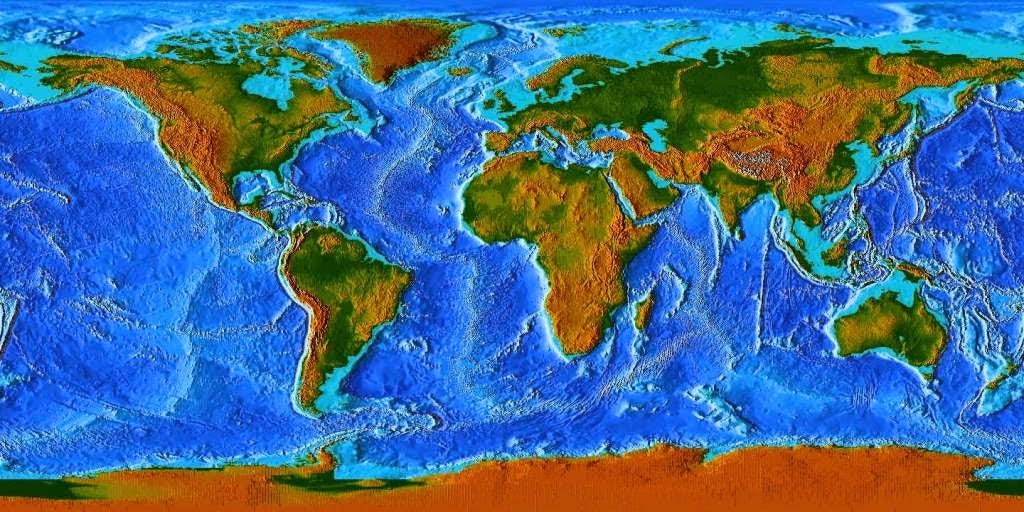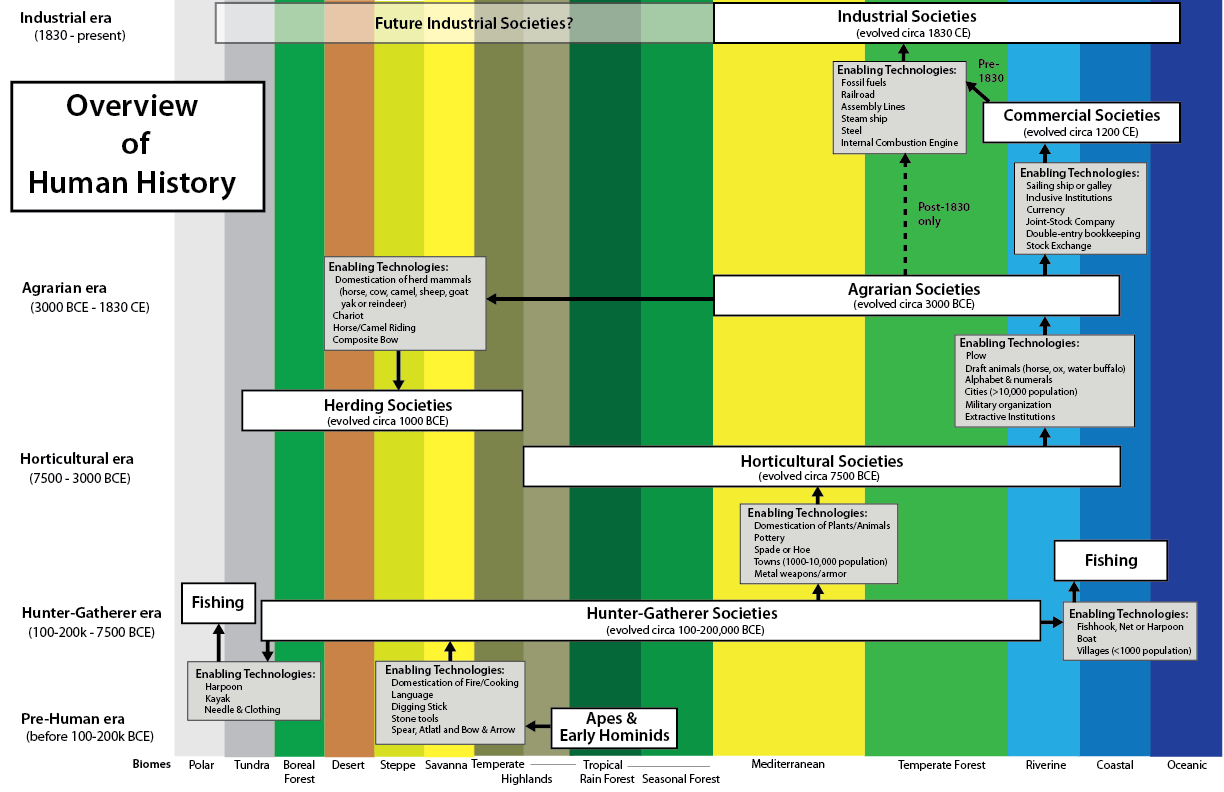A key theme of my Substack column and my From Poverty to Progress book series is the impact of geography on human history. I would like to start a new series that focuses on the geography of specific continents and regions. I will examine each of the regions on planet Earth to see whether their local geography enabled or constrained the evolution of complex human societies. Without complex human societies, material progress is not possible.
By complex societies, I mean:
Agrarian societies
Commercial societies
Industrial societies
For the vast majority of our history, humans have been highly constrained by geography. Just like other biological life forms we have been forced to adapt to serious geographical constraints. At any given time our technological suite was too limited to create major change to the natural environment for our own sake. It is only relatively recently that we have been able to overcome a significant portion of those constraints.
The single most important geographical constraint is the food we eat. Humans must consume energy in the form of food to survive. Few people had the luxury of time to solve other problems. Until we could create a large enough food surplus, human material progress was impossible for all but a tiny minority.
If you cannot survive, then you cannot innovate new technologies, skills or organization. This undermined our ability to create material progress. So food was a major constraint on the ability to innovate, and geography was a majority constraint on the ability to acquire food.
Until very recently, by far the most time-consuming task in people’s daily lives was in acquiring food. Other than sleep, the bulk of people’s time has been allotted to producing, preserving, storing, distributing, preparing and eating food. And much of the time left over has been devoted to building and repairing tools necessary for those tasks.
Because so much time and energy was needed to acquire food, entire societies were forced to organize themselves around the optimum means of doing so within their local environment. Because of environmental limitations, the limited number of skills that any one person can acquire, and the need for people to cooperate within social organizations, societies must specialize in one specific means of acquiring food.
Most of the following is an excerpt from my first book From Poverty to Progress: Understanding Humanity’s Greatest Achievement. You can order my e-books at a discounted price at my website, or you can purchase full-price ebooks, audiobooks, paperback, or hardcovers on Amazon.
Other books in my “From Poverty to Progress” book series:
See more articles on the impact of Geography in human history:
In previous articles, I have explained key geographical factors that enabled or constrained food production and the growth of complex societies. Before reading this series, I would recommend reading my explanation for why each geographical factor matters:
Habitat for domesticable plants, particularly rice, wheat, and corn.
Habitat for domesticable animals, particularly horses.
In this series, I will also refer to this graphic which explains how geography and technology enable the evolution of more complex society types. You can read more about this graphic in this article.
The most important characteristic of a geographical region is which society types can ultimately evolve within it. Since society types are based on how humans living within that society acquire enough food to survive and reproduce, the critical link between geography and society type is which types of food production a natural environment can potentially support. Humans then invent new food production and distribution technologies, skills and organization to maximize the potential within their natural environment.
I believe that given enough time, if a society type can evolve in a specific region, sooner or later a group of people will figure out how to do it.
Sequencing of Society Types
In any one natural environment, there are only a few society types that can potentially evolve within it. This leads to what I call the “sequencing of society types”. Rather than a linear sequence of societies naturally moving from simpler to more complex societies, in the graphic above we see a series of branching sequences based upon natural environment and technology.
Because Hunter-Gatherer, Fishing, Herding, Horticultural, and Agrarian societies require radically different geographical conditions, they lead to five different “dead-end” sequences. By “dead end”, I mean that those societies cannot evolve The Five Keys to Progress within their own region.
In other words, in many different natural environments, a society cannot transition to a more complex society type. For this reason, any group of people who live in those regions are trapped in poverty by geographical constraints. This means that modern-day progress was impossible without Industrial technologies, skills and social organizations being introduced from other societies located in different natural environments.
The five different sequences that can potentially occur within a geographical region are:
Hunter-Gatherer sequence: Hunter-Gatherer [stop]
Fishing sequence: Hunter-Gatherer > Fishing [stop]
Herding sequence: Hunter-Gatherer > Herding [stop]
Horticultural sequence: Hunter-Gatherer > Horticultural [stop}
Agrarian sequence: Hunter-Gatherer > Horticultural > Agrarian [stop, at least until 1830]
In the first sequence, geographical factors enabled the evolution up to, but not beyond, Hunter-Gatherer societies. In the second sequence, geographical factors enabled the evolution of Hunter-Gatherer societies and then Fishing societies, but no further. In the critical Agrarian sequence, geographical factors enabled the evolution of Hunter-Gatherer societies, then Horticultural societies, and finally to Agrarian societies. Then critical geographical constraints created a cul-de-sac that precluded further development until recently.
In other articles, we will explore the more complex sequences that result in Commercial and Industrial societies, but for now, these are five significant sequences. The sequence that we need to be on the lookout for while we survey each geographical region is the Agrarian sequence as it is the most complex pre-modern society. And as we will later see, it was a necessary intermediate step to Commercial and Industrial societies capable of delivering progress.
Now that we have identified the critical factors that led to the creation of complex Agrarian societies, let’s take a tour of each region. Because I will focus on geographical factors, the regions that I will use differ somewhat from the regions based upon political boundaries that are more typically used. In general, I will use the border of biomes and continents, rather than political boundaries, to separate the world into regions.
In this series I will cover the following regions:
Sub-Saharan Africa
South America
Central America and the Caribbean
Mesoamerica (roughly Central Mexico plus the northern half of Central America)
North America
Northern Eurasia
Southeast Asia
Central Asia
New Guinea
Australia
Middle East and North Africa
East Asia
Mediterranean Europe
Northern Europe
Stay tuned…
See more articles on the impact of Geography in human history:
Most of the following is an excerpt from my first book From Poverty to Progress: Understanding Humanity’s Greatest Achievement. You can order my e-books at a discounted price at my website, or you can purchase full-price ebooks, audiobooks, paperback, or hardcovers on Amazon.
Other books in my “From Poverty to Progress” book series:







Looking forward to this series, Michael!
https://voxdev.org/topic/agriculture/can-geography-explain-agricultural-productivity-differences-across-countries
Tldr - it doesn't.